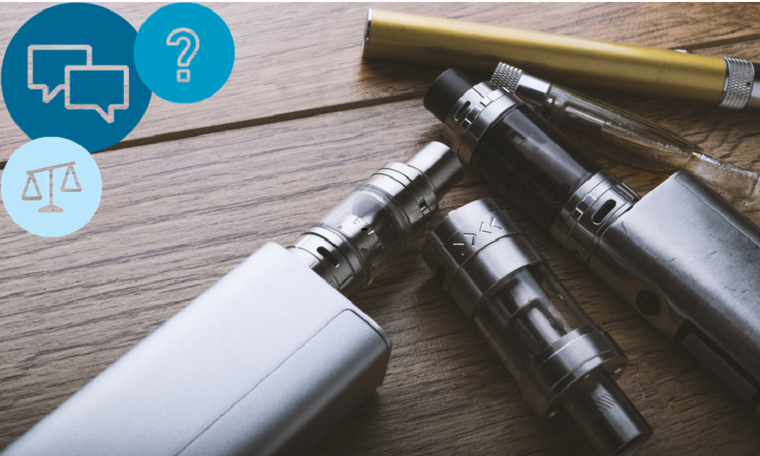
In June last year we set out our concerns about vaping ads being targeted at or likely to appeal particularly to under-18s; specifically, those ads appearing in social media where, under the law and our rules, they shouldn’t be. This was against a backdrop of wider societal unease, including from Government, about the significant increase in experimental vaping among 11- to 17-year-olds.
As we made clear at the time, advertising shouldn’t be a factor in under-18 vaping. And it’s why we set out our determination to identify and tackle problem vaping ads.
In the intervening 16 months we have carried out a comprehensive cross-organisational response to this issue. It has involved joint-work by various teams carried out on multiple fronts including: pro-active investigations, tech-assisted monitoring and enforcement, outreach and stakeholder engagement, as well as the provision of advice and training to industry.
During the course of our project, we sought to look under the bonnet and better understand the scale of the issue – how and where vaping ads are appearing on social media, as well as who’s responsible for putting them there. It revealed a diverse range of companies and individuals, including influencers, involved in the promotion of vaping products. That necessarily meant adopting different tactics to address the problem.
Using our Data Science capabilities we looked across platforms to identify vaping ads and the extent of the problem. Encouragingly, although some prohibited paid-ads occasionally slip through platforms’ own review systems, our checks revealed that the prevalence of them on social media was limited.
At the start of our project, the initial media and public commentary around vaping ads on social media primarily focussed on TikTok and influencers using the platform to posts ads for vaping products. While our monitoring revealed problem influencer advertising content on TikTok, as well as some vaping brands offering affiliate marketing and brand ambassador programmes, we also found paid and organic content from both influencers and businesses on all social media platforms in varying types and forms. And we uncovered several agencies offering digital marketing services directly to vaping companies.
Our front-foot approach resulted in several key ASA rulings against ads appearing in prohibited media as well as brands offering affiliate programmes that incited potential participants to break the law. We issued two Enforcement Notices (one to 150 vaping brands and the other to hundreds of key players including vaping brands, wholesalers and retailers) setting out the rules and directing them to stop any advertising on social media platforms including retailers’ own organic ads, paid-ads and influencer ad posts.
A crucial part of our enforcement work has been our follow-up monitoring. Harnessing our in-house AI-based Active Ad Monitoring system, we have been systematically running checks on whether advertisers, brands and retailers have been abiding by our Enforcement Notices. Included in that, we reported over 300 posts to TikTok for removal. Approximately 80% of those posts predated the notice, suggesting that significantly less content was being posted (or permitted to be posted) following the notice. We also focussed our Active Ad Monitoring system on organic accounts on Meta, initially identifying around 300 potentially problematic accounts. Follow-up monitoring revealed approximately 60% had been taken down post- our Enforcement Notice.
Our routine checks and our Compliance action is ongoing; unsatisfactorily, we’re still able to identify large numbers of accounts that aren’t following the rules. That’s led to direct conversations with the platforms on which the ads are published. And it’s involved ratcheting up our sanctions, including having social media accounts taken down where an individual or business appears unwilling or unable to stick to the rules. We have further enforcement action in the pipeline.
Keeping relevant stakeholders informed of our actions and seeking their input and support has helped inform and shape our work. We partnered with Trading Standards to deliver a webinar to industry, clarifying the rules, as well as updating the training and advice resources we provide to advertisers, agencies, businesses and media owners.
And in all of this, we’ve kept updated on progress a range of regulatory partners, vaping trade bodies and brands, government officials and departments across the nations as well as health campaign groups. We are closely monitoring legislative developments in this area and how that might impact our rules and future regulation of vaping ads. The Tobacco and Vapes Bill is due to come back to Parliament imminently.
All the steps we’ve undertaken to date have provided a solid platform from which our Compliance work in this area can and will be carried out on a routine basis. That’s led us to decide that, although our enforcement activity will continue, we will discontinue our formal co-ordinated response to tackling vaping ads.
In a month where NHS figures revealed that one in four children aged 11-15 in England tried vaping in 2023 and almost one in 10 (9%) regularly use e-cigarettes; the problem of and concerns around young people vaping hasn’t gone away. We are committed to ensuring vaping advertising isn’t an incendiary device in undermining young people’s health.
-
Keep up to date
Sign up to our rulings, newsletters and emargoed access for Press. Subscribe now.


